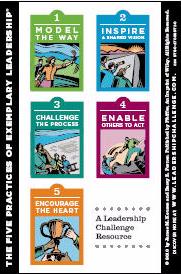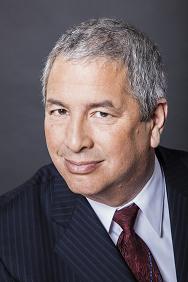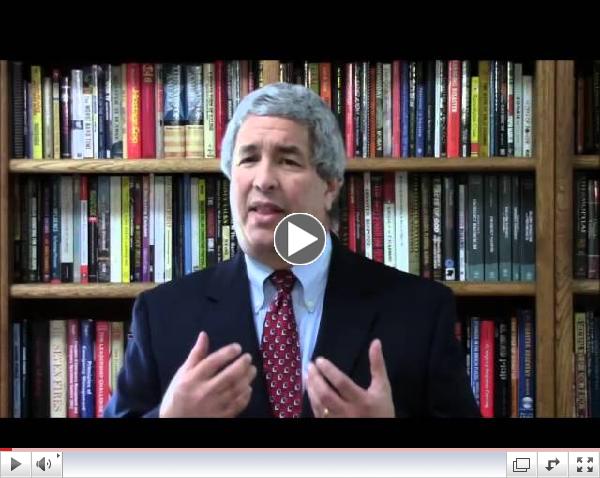In August of 1910, high winds and severe drought conditions combined several smaller fires into what would become known as the Great Fire of 1910. The fire only lasted two days but, in that time, it killed 87 people (mostly firefighters) and destroyed several towns and over three million acres of forest land in Idaho, Montana, Washington, and British Columbia. The US Forest Service was only a few years old at the time, but their heroism helped raise public awareness about conservation. The fire has proven to be a focusing event for wildfire fighting strategy and helped consolidate support for the national forest system established by President Theodore Roosevelt. This video includes comments by Timothy Egan and covers many of the key points in his book, The Big Burn. |
The following are excerpts from my blog
Canton on Emergency Management. Please visit my blog to see the rest of my articles.
Despite the presence of official shelters, evacuees may choose to create spontaneous shelters in other areas. Quick action is essential to head off safety concerns and to avoid public relations nightmares.
|

What Is The Leadership Challenge?
 Is leadership a learned behavior or an innate personality trait? While there are certainly naturally charismatic individuals who are considered "born leaders", leadership is a measurable set of behaviors that can be learned and taught. This is the conclusion arrived at by researchers Jim Kouzes and Barry Posner after years of rigorous research. Starting in 1982, Kouzes and Posner set out to understand what happened when leaders performed at their personal best. They conducted hundreds of interviews and reviewed hundreds of cases studies and survey questionnaires. What emerged were five fundamental practices common to extraordinary leadership achievements:
- Model the Way
- Inspire a Shared Vision
- Challenge the Process
- Enable Others to Act
- Encourage the Heart
The Leadership Challenge begins with a 360-degree assessment of thirty leadership behaviors associated with the five practices, the Leadership Practices Inventory. The results are used to identify opportunities for improving as a leader by increasing the frequency of specific behaviors. Based on over thirty years of research, the Leadership Challenge is an effective and practical tool for leadership development.
To find out more about the
Five Practices of Exemplary Leadership
, consider taking
The Leadership Challenge
. Just click on the icon below for more information:
|
|
| Click here to take The Leadership Challenge |
____________________________________
The Leadership Challenge: How to Make Extraordinary Things Happen in Organizations
by James M. Kouzes & Barry Posner
_______________________________
The Leadership Challenge is a registered trademark of John Wiley &
Sons, Inc.
|
Free Resource Guide for Solo Consultants
For solo consultants, true wealth is discretionary time. Don't waste yours on simple tasks that can be handled by technology. This free resource guide reveals the four essential online tools I use to manage my solo consulting practice and save hours of valuable time. And the best part is - they're free!
 Interested in exploring the world of consulting? My membership site might be just the resource you need to get started. You'll have access to blogs designed to answer very specific questions, a resource library of templates and articles, the opportunity to network with peers, and discounts on coaching and training programs. Download the free guide or click on the logo above to go straight to the site.
Interested in exploring the world of consulting? My membership site might be just the resource you need to get started. You'll have access to blogs designed to answer very specific questions, a resource library of templates and articles, the opportunity to network with peers, and discounts on coaching and training programs. Download the free guide or click on the logo above to go straight to the site.
|
|

M
y Blogs
Follow Me
|
|

Welcome to the November edition of Emergency Management Solutions.
The start of the holiday season is one that most people look forward to with joy. However, for many, this holiday will be memorable for the wrong reasons.
As I write this, the most destructive and deadly fire in California history is still a working fire in Northern California, although 100% contained, leaving over 80 dead and thousands displaced. Another fire in Malibu burned almost 100,000 acres and forced evacuation of threatened areas. In addition, we are still dealing with aftermath of last year's Wine Country fires. Welcome rain is in the forecast but with it comes concern over mudslides and flooding.
California is not the only state affected by disasters this season, nor the United States the only country. For many of my friends and colleagues, this holiday season is going to be busy.
Regards,
|
|
_
________________________________________________
Mitigating The "Second Disaster"
Rethinking Donations Management
|
It happens in every major disaster. Well-intentioned people overwhelm disaster workers with donations of used clothing and household items. While there is no question that people who have lost everything may have need of some of these items, there is little thought given to the impact on disaster operations.
That impact can be significant. In my career I have seen numerous examples of this:
- Staff pulled from the emergency operations center to meet a "symbolic" shipment of donated water from a sister city.
- Military flight missions diverted to pick up donations for political reasons.
- Landfills pushed to capacity with unneeded goods (eg. fur coats sent to Hawaii).
The problem has several dimensions. Leaving aside unsuitability (for health reason, we can't accept used underwear, no matter how well washed, for example), a very real issue is sizing and sorting used clothing. We lack the resources to do this and must really on agencies such as the Salvation Army or on volunteers. In the end, much of this used clothing ends up in an overtaxed landing because there is no one to sort it.
A secondary issue is the presence of people in the disaster area who are inadvertently putting themselves at risk or creating problems for the local authorities. It's no wonder that donations management is referred to as the "second disaster" by many emergency managers.
|
|
_______________________
________
If you are having trouble viewing my featured article, try clicking on the link at the top of the page. You can always find my articles in the white paper section of my blog site,
Canton on Emergency Management.
|
|
Learning the Language
Emergency managers bridge multiple disciplines in the course of their role as coordinators and facilitators. One of the problems we face is the need to understand and, in some cases, translate the internal language used in these separate disciplines.
A good example can be seen in the reporting on the recent wildfires in California. The term "contained" is often used in the media and gives the impression that a fire that is 100% contained is out. To a firefighter, however, this merely that a control line has been completed around the fire and that its spread has stopped. Operations are ongoing.
The same is true when dealing with insurance adjusters. Terms like "salvage" have very distinct meanings and using the wrong term can have a negative effect on insurance payouts. It's also common to see confusion arising from the weather service terms "watch" and "warning."
I was found myself acting as a translator in a meeting that involved a retired military officer and a civilian worker who had trouble understanding each other until I put the issues in terms that each could understand. The fact that they worked in the same organization did not mean they could effectively communicate with each other.
Misunderstandings can lead to bad feelings and bad decisions. Make sure that what someone hears is what you meant by understanding the meaning of the language they use and being precise in your terms.
Resources
PrepTalk - Healthcare Emergency Preparedness and Response
FEMA has released the video of Dr. Sheri Fink's PrepTalk,
Some months ago, I profiled the book
Five Days at Memorial: Life and Death in a Storm-ravaged Hospital and an interview with the author, Dr. Sherie Fink.
Dr. Fink's latest article, Lost in the Storm tracks a family's attempts to be rescued during Hurricane Harvey.
In her PrepTalk, Dr. Fink shares these two real-world case studies that demonstrate the value of situational awareness, the complexities of prioritizing limited resources, and the importance of ensuring systems can effectively support operational decisions.
Professional Development Opportunities
The 21st Annual Emergency Management Higher Education Symposium
June 3-6, 2019
FEMA Emergency Management Institute
Emmitsburg, MD
Broomfield, CO
The theme of the 2019 Workshop will be Convergence. Explore how we come together to study hazards and disasters, apply the knowledge that's generated, help one another, build community capacity, implement meaningful policy, and envision a future that leads to reduced disaster risk and improved social well-being.
Nov. 15-20, 2019
Savannah, Georgia
The goal of the IAEM Annual Conference is to improve knowledge, competency level and collaborative skills. IAEM accomplishes this by attracting relevant high-profile
speakers to address current topics and practical solutions.
|
|
|
Five Steps to Life Balance
I recently came across a blog posting from the recruiting company Michael Page that suggested life balance can be achieved in just five simple steps. I'm not a big believer in simplistic approaches but I have to admit that these made a lot of sense. I don't think they truly address all the issues I associate with life balance but since they articulate the approach I take to my work, I thought them worth sharing.
- Step 1 - Prioritize work tasks, making sure you allocate adequate time for priority tasks.
- Step 2 - Structure your time at work around your priorities, grouping similar tasks where you can.
- Step 3 - Take breaks during the work day by allowing yourself personal time for things like exercise, socializing, and personal errands.
- Step 4 - Make use of annual holidays to recharge and focus on things that interest you such as hobbies or family time.
- Step 5 - Leverage technology to work smarter whenever possible and, more importantly, know when not to use it.
|

The Big
Burn: Teddy Roosevelt and the Fire That Saved America
By Timothy Egan
As fires burn across the nation this summer, including the largest fire in California history, we sometimes take for granted the strategies and tactics and, most importantly, the coordination that is needed to marshal resources from around the country.
In 1910, the US Forest Service was barely a few years old and firefighting strategy was in its infancy. Severe drought throughout the northwest produced over 1,000 fires. High winds caused several of those fires to merge into a major firestorm, creating what would come to be known as the Great Fire of 1910, also called "The Big Burn", the largest fire in American history.
The story of how an unprepared group of firefighters rose to the challenge is gripping but Egan goes beyond this to set the fire in the context of the battle to create a national forest system. In addition to detailing the formation of the Forest Service and the heroism of the crews, Egan covers the resistance of the oligarchy to President Theodore Roosevelt's dream of preserving the American wilderness. Most importantly, he notes how the fire changed the role of the Forest Service from conservation to fire prevention, a strategy that was self-defeating and a contributing cause to the growth of destructive fires.

|
|

Emergency Management: Concepts and Strategies for Effective Programs
by Lucien G. Canton

|
|
Need a speaker for your next conference? I offer keynotes, seminars and workshops.
 |
|
Three Reasons Why I'm the Right Speaker for Your Conference
|
|
|
Speaking Engagements
Now Taking Bookings for 2019
|
|
| |
|